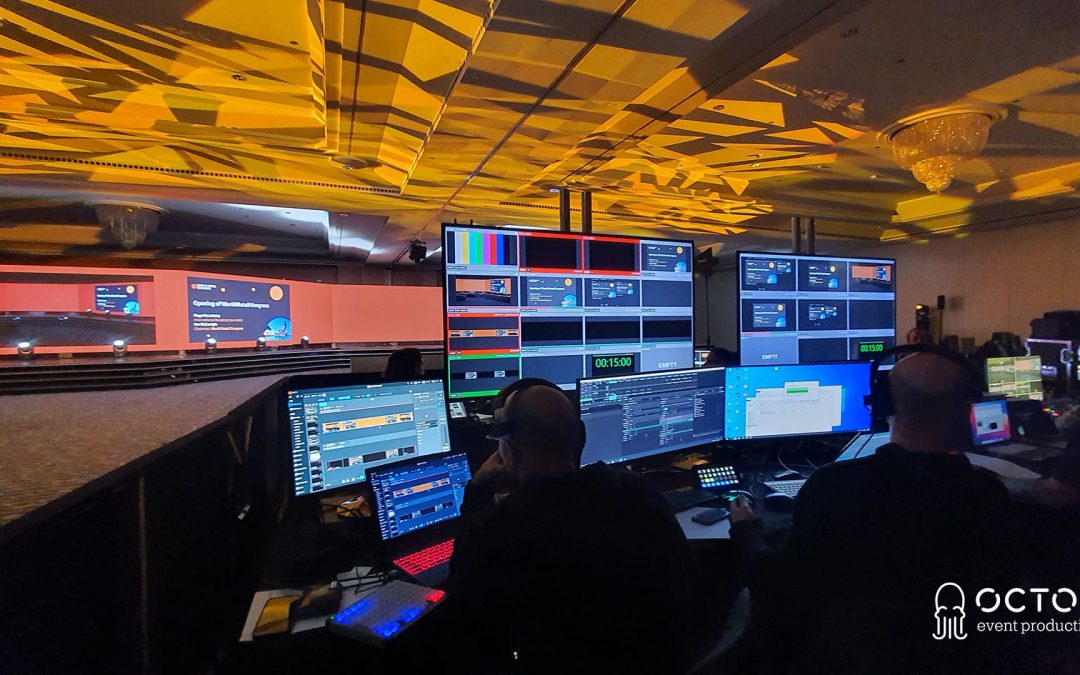In the era of digital transformation, the audiovisual market is undergoing an unprecedented revolution driven by technological advancements and constant innovation. Emerging audiovisual technologies are redefining how brands and businesses communicate with their audience, offering increasingly immersive, interactive, and personalized experiences. From Virtual Reality (VR) and Augmented Reality (AR) to the adoption of 5G networks and Artificial Intelligence (AI), explore how these technologies are shaping the future of audiovisual production and opening new frontiers for creativity and interaction.
Virtual Reality (VR) and Augmented Reality (AR) in Audiovisual
VR and AR are revolutionizing the audiovisual market by providing unique and immersive experiences that transcend traditional screen limits. VR allows users to fully immerse themselves in virtual environments, offering a new dimension for storytelling and product presentation. On the other hand, AR enriches the real world with digital elements, opening new possibilities for interactive advertising and product visualization in real contexts.
Live Streaming and Video on Demand (VOD)
The rise of live streaming and VOD platforms is radically changing audiovisual content consumption patterns. The ability to stream events in real-time or access a vast library of on-demand content offers unprecedented flexibility and convenience for viewers, while providing companies with new ways to reach their global audience.
5G Networks and Audiovisual Transformation
The implementation of 5G networks promises to revolutionize the audiovisual market through its ability to transmit large amounts of data at ultra-fast speeds. This not only improves the quality of live streams and enables richer high-definition content experiences but also enables new interactive applications and unprecedented real-time user experiences.
Artificial Intelligence in Audiovisual Production
AI plays a crucial role in the evolution of audiovisual production, from automating editing processes to personalizing content for specific audiences. The ability to analyze large volumes of data to understand audience preferences and behaviors is enabling more targeted and effective content creation, optimizing distribution, and maximizing impact.
Technological Advances in Production and Post-Production
With cloud-based production and post-production, remote collaboration is facilitated, and audiovisual production workflows are streamlined. The adoption of HDR technology and 4K/8K resolutions is significantly improving image quality, providing a more detailed and immersive visual experience than ever before.
Final Reflection
Audiovisual technologies continue to advance at a rapid pace, offering unlimited opportunities to innovate in content production and consumption. For industry professionals, staying updated with these trends is not only essential for competitiveness but also opens new creative avenues to connect with their audience in unprecedented ways. In this dynamic landscape, the key to success lies in the ability to adapt, experiment, and harness the full potential of these technologies.
The audiovisual technologies are paving the way toward a future where innovation in the audiovisual market constantly redefines the limits of what is possible. Whether through virtual reality, augmented reality, live streaming, cloud production, or the introduction of 5G networks, we are witnessing a golden age of technological advancements in audiovisual production. The question for creators and consumers is not if these technologies will transform the industry but how we can fully leverage their disruptive potential.






